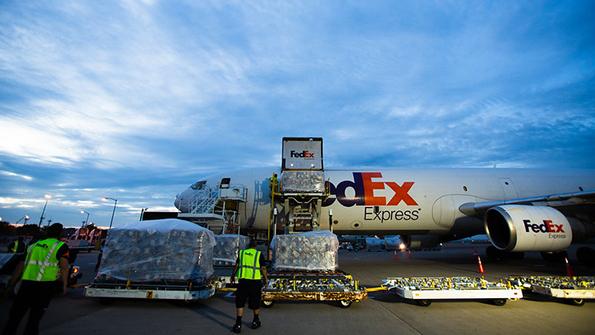
One of the few aviation bright spots in the COVID-19 crisis is air cargo. While passenger traffic plummeted and 40% or more of the passenger fleet was parked for much of last year, most cargo freighters remained in service with even higher levels of utilization, helped by a dramatic decline in belly cargo capacity. Moreover, structural changes are unfolding in global supply chains that could accelerate its growth when passenger traffic recovers. What are these changes, and what do they mean for stakeholders?
The first is the dramatic growth of e-commerce. When traditional brick-and-mortar retail channels contracted last year, consumers turned to online shopping. IBM believes the pandemic accelerated the transition to e-commerce by five years; other estimates are even higher. E-commerce sales in the U.S. were up a staggering 32% in 2020, reaching $791 billion. Half of these gains were captured by a single company: Amazon.com. Even countries such as Italy that were relative laggards took a major leap. The Economist magazine calls the phenomenon “tech-celeration.”
Accompanying the explosion in e-commerce is mounting evidence of a shift in transportation modes to favor air cargo, according to Brian Clancy of consultancy Logistics Capital & Strategy. “Traditionally, a retailer might order several ocean containers of merchandise per year from a factory,” Clancy explains. “However, the new distribution channels created by e-commerce giants like Amazon are changing the paradigm. We are now seeing smaller and more frequent shipments from factories to Amazon fulfilment centers, which, in turn, ship to consumers. We call it B2B2C. And there is evidence that more of these pallet-sized shipments are traveling by air cargo.”
Even small mode shifts from maritime to air cargo can have an outsized impact. Consider transpacific trade, where Clancy estimates maritime shipping handles 94% of trade by weight, with air cargo comprising the rest. “Just a 1% shift to air cargo means 16% growth. We could see air cargo pick up 2-3% (from maritime shipping) in this cycle.” The shift is underpinned by turmoil in the ocean freight network, where there are major bottlenecks and big regional imbalances in shipping container availability.
Clancy’s hypothesis is backed up by 2020 data, which shows that air cargo activity recovered to pre-COVID-19 levels by the fourth quarter despite a deep global recession. With less capacity available, yields have increased: Transpacific yields before the pandemic were $3-3.50/kg; today they are $8/kg. Yields will fall when belly capacity returns as the COVID-19 crisis fades, of course, and the ocean freight network eventually will work out its bottlenecks. But on balance, air cargo looks set for a promising period of growth.
What are the implications of these changes for stakeholders? First, they strengthen the financial prospects of air cargo operators—including integrators, all-cargo airlines and passenger airlines with cargo businesses. FedEx and UPS reported quarterly revenue increases of 19% and 21%, respectively. Atlas Air earned $360 million in net profits for 2020—a $653 million improvement over 2019 results. Taking a broader view, cargo accounted for 12% of 2019 airline industry revenue. In 2020, it was approximately 30%.
Second, we are likely to see more dedicated freighters on the other side of the crisis. This is because belly capacity will be reduced due to a surge in twin-aisle retirements, coupled with lower production rates. AeroDynamic Advisory expects twin-aisles to comprise just 16% of jetliner production after the crisis, compared to 24% before. This could provide a much-needed lifeline to struggling programs such as the Boeing 777. DHL, for example, ordered eight 777 freighters in January.
Third, passenger-to-freighter conversion activity will be robust. Most freighters are converted passenger airliners, and there is an ample supply of low-cost aircraft “feedstock” thanks to COVID-19, with thousands of aircraft parked and headed for retirement.
Finally, maintenance, repair and overhaul suppliers will also benefit. The nearly 1,900 active freighters are older than passenger aircraft, which means there will be plenty of activity for aircraft maintenance suppliers. OEMs with equipment on older fleets, such as Pratt & Whitney, will see tailwinds for mature aftermarket revenue streams.
Amid the devastation of COVID-19, air cargo’s boost offers hope to the aviation industry.





